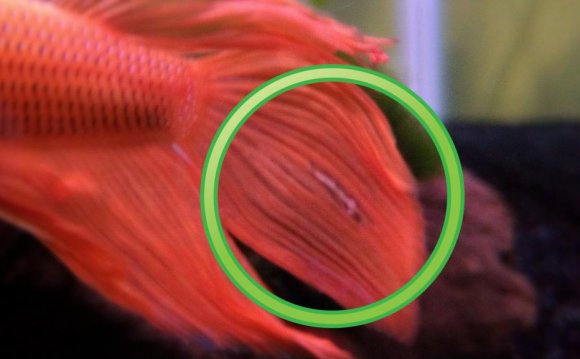

Steps
Part 1
Identifying Diseased Fish- Recognize bacterial infections. Bacterial infections come with different symptoms that you may be able to identify through observation. These symptoms can include the following:
- Inactivity
- Faded color
- Frayed fins
- Bloated body
- Cloudy eyes
- Abscesses
- Open sores
- Red streaks through the fish's body
- Redness of the skin, fins, or organs
- Difficulty breathing
- Bulging eyes
- Recognize fungal infections. Fungal infections can be associated with other types of illnesses.
 The symptoms of a fungal infection could include the following:
The symptoms of a fungal infection could include the following:
- Strange swimming behavior including the tendency to dart around the tank
- Small collections of whitish material growing on the fish's eyes, skin, or mouth
- Recognize parasitic infections. If your fish has a parasitic infection, its symptoms will differ from those of bacterial or fungal infections. Some symptoms to watch for include:
- A lack of appetite
- A tendency to be inactive
- A film or unusual mucus on the fish's body
- Worms or spots that you can see on or in the fish's body
- Fast breathing
- Scratching
- Recognizing other diseases. Some other diseases might be non-infectious, such as tumors, constipation, injuries, or even congenital abnormalities. Some diseases may be viral as well.
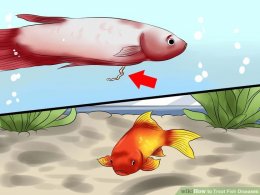 Most diseases have treatments available, and proper filtration can help prevent recurrence of diseases whether the tank is freshwater or saltwater.
Most diseases have treatments available, and proper filtration can help prevent recurrence of diseases whether the tank is freshwater or saltwater.
Part 2
Setting Up a Hospital Tank- Find a tank to use for the hospital tank. The hospital tank can be an inexpensive aquarium or an older unit not currently in use as a display tank. Do not use substrate (sand or gravel) or live plants. A filtration system that does not use carbon should be used in the hospital tank because carbon may negate some medicines.
- Artificial plants may be used to comfort diseased fish. Other types of cover where the fish can hide may be comforting as well.
- The carbonless filter used should also be lower power in order to avoid disturbing the fish too much.
- Use a reliable heater. The hospital tank's water must be kept at the appropriate temperature for your fish.
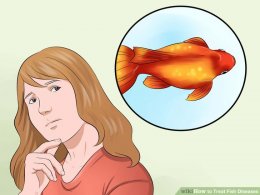 Choose a heater that will not vary its temperature too much in order to keep the ailing fish comfortable and safe. Be sure to protect the fish from heater burns as well by blocking the heater from direct contact with the fish. This can be done with any kind of barrier to the heater, such as plastic mesh.
Choose a heater that will not vary its temperature too much in order to keep the ailing fish comfortable and safe. Be sure to protect the fish from heater burns as well by blocking the heater from direct contact with the fish. This can be done with any kind of barrier to the heater, such as plastic mesh.
- Pet stores or aquarium specialty stores can recommend other options for heater barriers.
- Use an air stone. An air stone in an aquarium can help replace oxygen in the water. This is particularly useful in a hospital tank because some medicines can reduce the amount of available oxygen in the water. Air stones are available anywhere aquarium supplies are sold.
- Keep the hospital tank in a dark room and dimly lit. Some diseases can be inhibited by little or no light, so keeping the aquarium minimally lit and in a dark room can help treat the diseased fish. This depends, of course, on the pathogen, but if your fish's ailment is one that needs light, keeping the aquarium dimly lit and in a dark room may help fight the disease.
- Check with an aquarium specialist at your pet store, aquarium specialty store, or a veterinarian to see if your fish's ailment can be inhibited via minimal lighting.
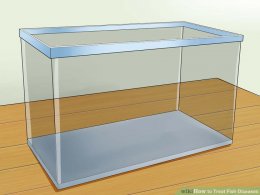
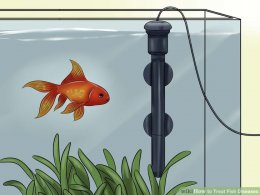
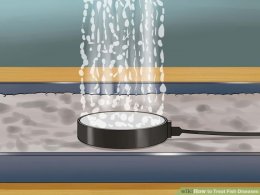
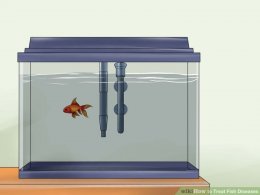
Source: www.wikihow.com









